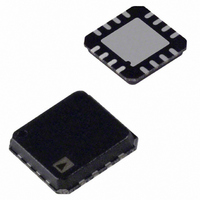AD8222ACPZ-RL Analog Devices Inc, AD8222ACPZ-RL Datasheet - Page 15

AD8222ACPZ-RL
Manufacturer Part Number
AD8222ACPZ-RL
Description
IC,Instrumentation Amplifier,DUAL,LLCC,16PIN,PLASTIC
Manufacturer
Analog Devices Inc
Datasheet
1.AD8222BCPZ-R7.pdf
(24 pages)
Specifications of AD8222ACPZ-RL
Amplifier Type
Instrumentation
Number Of Circuits
2
Slew Rate
2 V/µs
-3db Bandwidth
1.2MHz
Current - Input Bias
500pA
Voltage - Input Offset
120µV
Current - Supply
900µA
Current - Output / Channel
18mA
Voltage - Supply, Single/dual (±)
4.6 V ~ 36 V, ±2.3 V ~ 18 V
Operating Temperature
-40°C ~ 85°C
Mounting Type
Surface Mount
Package / Case
16-LFCSP
Lead Free Status / RoHS Status
Lead free / RoHS Compliant
Output Type
-
Gain Bandwidth Product
-
Lead Free Status / RoHS Status
Lead free / RoHS Compliant
Available stocks
Company
Part Number
Manufacturer
Quantity
Price
Company:
Part Number:
AD8222ACPZ-RL
Manufacturer:
ADI
Quantity:
1 000
THEORY OF OPERATION
AMPLIFIER ARCHITECTURE
The two instrumentation amplifiers of the AD8222 are based
on the classic 3-op-amp topology. Figure 44 shows a simplified
schematic of one of the amplifiers. The input transistors, Q1
and Q2, are biased at a fixed current. Any differential input
signal forces the output voltages of A1 and A2 to change so that
the differential voltage also appears across R
flows through R
in a precisely amplified version of the differential input signal
between the outputs of A1 and A2. Topologically, Q1 + A1 + R1
and Q2 + A2 + R2 can be viewed as precision current feedback
amplifiers. The common-mode signal and the amplified differen-
tial signal are applied to a difference amplifier that rejects the
common-mode voltage. The difference amplifier employs innova-
tions that result in low output offset voltage as well as low output
offset voltage drift.
Because the input amplifiers employ a current feedback architec-
ture, the gain-bandwidth product of the AD8222 increases
with gain, resulting in a system that does not suffer from the
expected bandwidth loss of voltage feedback architectures at
higher gains.
The transfer function of the AD8222 is
where:
V
G
OUT
1
= G(V
I
B
–IN
49.4
COMPENSATION
R
G
+IN
G
kΩ
must also flow through R1 and R2, resulting
400Ω
− V
−IN
+V
–V
S
S
) + V
REF
Q1
I
C1
R1 24.7kΩ
A1
G
+V
–V
. The current that
S
S
R
G
V
B
Figure 44. Simplified Schematic
+V
–V
R2
S
S
Rev. A | Page 15 of 24
A2
24.7kΩ
C2
Q2
GAIN SELECTION
Placing a resistor across the R
AD8222, which can be calculated by referring to Table 8 or by
using the following gain equation:
Table 8. Gains Achieved Using 1% Resistors
1% Standard Table Value of R
49.9 k
12.4 k
5.49 k
2.61 k
1.00 k
499
249
100
49.9
The AD8222 defaults to G = 1 when no gain resistor is used.
The tolerance and gain drift of the R
to the AD8222’s specifications to determine the total gain
accuracy of the system. When the gain resistor is not used,
gain error and gain drift are kept to a minimum.
I
–V
I
+V
R
B
G
S
COMPENSATION
S
400Ω
49.4
G
kΩ
10kΩ
10kΩ
1
+IN
10kΩ
A3
10kΩ
G
G
terminals sets the gain of the
(Ω)
+V
–V
S
S
G
resistor should be added
+V
–V
S
S
Calculated Gain
1.990
4.984
9.998
19.93
50.40
100.0
199.4
495.0
991.0
OUTPUT
REF
AD8222














